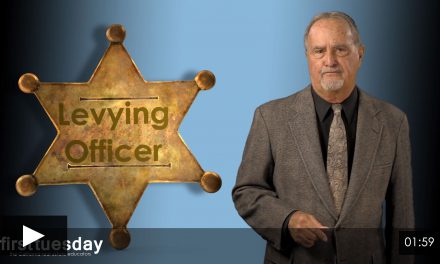For the prior video feature in this series covering the seller and seller’s agent’s mandated disclosure of flood zones and areas of potential flooding, click here.
Proper disclosure of a property in a very high fire hazard severity zone
Areas in the state which are subject to significant fire hazards have been identified as very high fire hazard severity zones. If a property is located in a very high fire hazard severity zone, a disclosure needs to be made to the prospective buyer. [See RPI Form 314 §3]
The city, county or district responsible for providing fire protection have designated, by ordinance, very high fire hazard severity zones within their jurisdiction. [Calif. Government Code §51179]
The fire hazard disclosure on the Natural Hazard Disclosure (NHD) form mentions the need to maintain the property. Neither the seller nor the seller’s agent need to explain the nature of the maintenance required or its burden on ownership. Advice to the buyer on the type of maintenance and the consequences of owning property subject to the maintenance are the duties of the buyer’s agent, if they have an agent. [See RPI Form 314]
Preparing for wildfires
Costly and dangerous wildfires are quickly becoming the norm here in California. As wildfires continue to make headlines, homebuyers are weighing the risks more heavily and homeowners are taking action. Real estate professionals need to be prepared to answer questions and make recommendations on wildfire safety for both homebuyers considering property in these high-risk areas and sellers who may need to make fire safety improvements before selling.
Homebuyers will first learn if their potential new home is located in a fire hazard zone by receiving a completed NHD. [See RPI Form 314]
But being located in a fire hazard zone isn’t necessarily a deal breaker — particularly since homebuyers aren’t likely to shift their search outside the zone, when zones can cover whole cities and counties. But what might be a deal breaker is a home that is not retrofitted or maintained with fire safety in mind.
For example, new homes are always safer from wildfires, since their construction adheres to updated building codes. But homeowners of older homes can gradually replace parts of the building with fire-safe materials as maintenance and improvements are needed.
Landscaping to reduce a home’s chances of being destroyed in a wildfire is also important, including:
- trimming and cutting down unsafe or clustering trees;
- trimming shrubs to a maximum height of 18 inches;
- removing any vegetation within three feet of the home;
- clearing leaves and branches from the yard;
- cleaning gutters and roof debris;
- moving wood piles away from structures; and
- replacing grass or vegetation near the home or other structures with gravel.
Planning a home’s landscape to protect the structure from wildfires is part of creating defensible space zones. Properties located in very high fire hazard severity zones require at least 100 feet of defensible space surrounding the home or structure. [Calif. Gov C §51182(a)(1)]
Likewise, agents showing homes to buyers in fire-prone areas can keep an eye out for these hazards that increase the chance of wildfire damage, such as:
- tall grass and weeds;
- dead or dry leaves, pine needles and tree branches;
- vegetation beneath decks and porches;
- tree limbs within ten feet of the chimney;
- shrubs within a few feet of the home; and
- trees clustered within ten feet of each other on or near the property.














